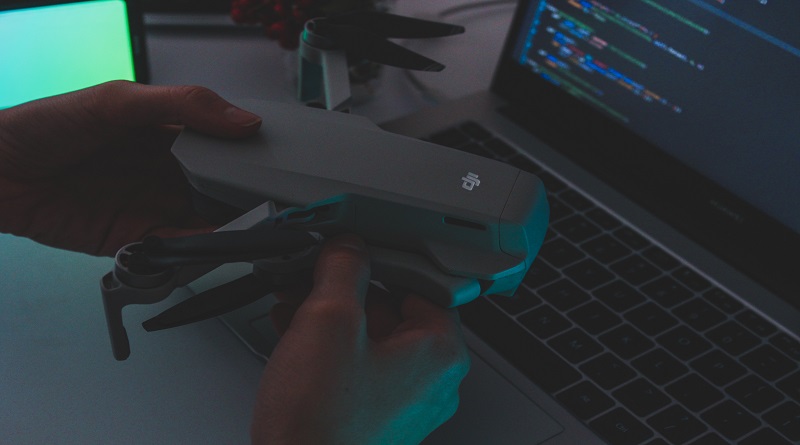The Future of Medtech

A couple of decades ago, robotics were mainly found in science-fiction stories. Today, this technology is making its mark in nearly every field, including medicine. How are medical professionals using robots, and what are the most significant challenges moving forward?
Robots in Medicine
Robotics is making a significant impact in the medical field.
Robotic surgery assistants have been making waves in medicine for decades. NASA was playing with the idea of telesurgery in the 1970s as a way to care for astronauts in orbit. However, this technology didn’t emerge as a viable option until the 2000s.
The first robotic-assisted surgery took place in 1985, using a robot named PUMA 560. The goal was to reduce the impact of naturally occurring hand tremors in surgeons. The Da Vinci surgical system is the one most people think of when discussing robotic surgery, but it didn’t emerge until 2010.
Robotics is also assisting in rehabilitation circles. Robotic exoskeletons work directly with the affected body part, providing better outcomes for patients recovering after an injury or illness. It becomes especially useful when someone cannot perform a task on their own, especially at the beginning of their rehabilitation journey.
Robotic assistants are already used in medical settings for deliveries and dispensing prescriptions. They’ve also become valuable tools for disinfection during the COVID-19 pandemic, allowing facilities to prevent the spread of the virus without exposing anyone to potential infection.
This list of robots in medicine isn’t exhaustive by any means. Engineers are just beginning to showcase the full breadth of this technology’s potential.
Challenges of Robotic Medtech
Adopting robotics in health care might seem like the perfect solution to many problems, but some challenges still face the technology moving forward. Engineers need to overcome social barriers surrounding the use of robots in medicine. Some patients may dislike the idea of a robot in the surgery center or hospital. They may feel like they aren’t getting the best care or miss the human interaction they’ve come to expect from medical care.
There is the additional concern of patient privacy and security as robotic medtech becomes more autonomous. Networked devices connected to wireless internet require extra protection to ensure they aren’t susceptible to hacking.
Compromised cybersecurity, especially on surgical robots, could put patient lives at risk. Researchers at the University of Washington hacked a surgical robot in 2015 to showcase that it was possible. If a malicious hacker managed the same during a procedure, it could mean the patient’s death on the table.
These risks and challenges might seem a good reason to keep robots out of medicine. Still, the benefits far outweigh the risks, as long as each new robot has comprehensive cybersecurity protocols.
PCBs in Medicine
Printed circuit boards (PCBs) are the basis of most modern electronics. Every device in commercial or personal settings uses these boards to transmit power and route signals.
The same applies to medical devices. PCBs are made using a non-conductive base material, with copper circuitry embedded in the base or printed onto the surface. In simple circuits, these boards are only one or two layers thick. There may be as many as 50 layers in more complex circuits. What challenges do medtech engineers face when choosing PCBs for medical devices?
Quality management is the first challenge. If a PCB fails in a cellphone, the owner has the option to get a new device. One that fails in an implanted medical device could risk patients’ lives. Prototyping for new devices is also a challenge. In addition to completing a task, companies need to maintain the highest quality standards while keeping up with high-volume orders.
Assembling these medical PCBs is a time-consuming task involving much expertise. Transitioning from hand-assembled PCBs to those created by robotic assembly lines can remove the problem of human error, improving quality while keeping up with demand.
Implantable medical devices that rely on PCBs must be of the highest quality possible, especially items that are replaced infrequently. The failure of a PCB in a pacemaker or implanted defibrillator could cause the death of the patient if not caught in time.
AI and Robotics in Medicine
Artificial intelligence (AI) is another tool that will eventually go hand in hand with robotics in the medical field. Researchers are already beginning to use AI to predict surgery outcomes, including who might be most susceptible to infections.
It is also becoming a popular tool for diagnostics, especially in oncology. Submitting a new patient’s scan to a machine learning AI database can help diagnosticians create more accurate diagnoses faster, which can help improve patient outcomes.
There are plenty of applications for AI in medicine that researchers are already exploring, but when it comes to robotics, the technology isn’t quite there yet. Artificial intelligence programs may be able to assist in diagnostics and prediction, but they aren’t ready to take over for skilled surgeons. There are many layers of nuance and complexity, especially for delicate surgeries, that an AI system can’t manage.
There is also a level of creativity necessary to make split-second decisions if something goes wrong during a procedure. AI systems are incapable of this sort of flexible and adaptive thinking, at least in their current forms. The technology may continue to change and evolve in the years to come, but for the moment, there is no replacement for the skill and experience of a human surgeon.
The Future of Medtech
Robotics has already made a mark in the field of medicine. Surgery robots have been around for decades, and these artificial assistants are making waves in other medical sectors. Everything relies on printed circuit boards, from the most complex machine to the most straightforward robotic prescription distribution system. Creating a network that allows for manufacturing high-quality PCBs can help robotic medtech evolve.
Robotics will continue to change and grow as an essential tool in medicine in the years to come. They may never reach a point where they can replace skilled doctors and surgeons, but they will become an invaluable tool for various medical procedures moving forward.
Also read: Investment in telemedicine app development is fruitful



